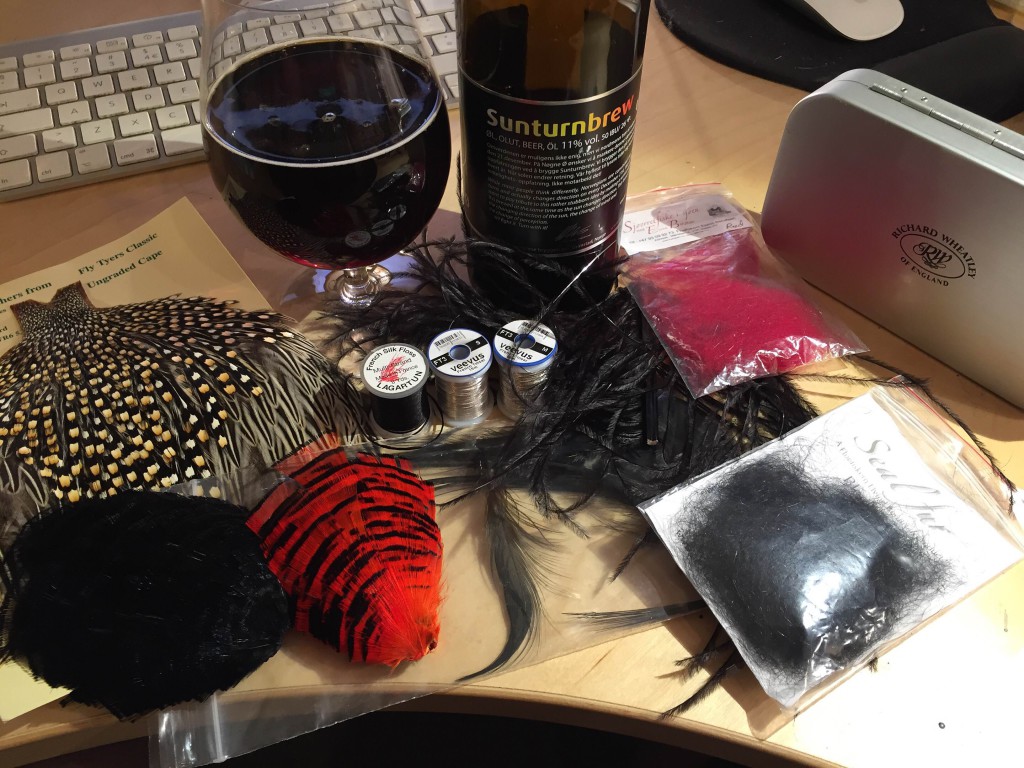
Last winter I got myself a copy of the “Tied in the Hand” book by Sven-Olov Hård and set myself a goal of tying a classic without a vice before the year was over. I got myself some Pearsall’s gossamer silk, tied up some Durham Rangers and other classics, but never got to actually sit down and do it. Yesterday I had a couple of hours with nothing much to do and decided to (at least) get started.
I have read the book, but didn’t sit down to really study it, but thought that enough of it was still remembered to get started! I got one of my biggest hooks; a #5/0 Mustad, picked out the material needed for a Durham Ranger and sat down in the living room with no vice in front of me, and just a cardboard box to keep the clippings.
Why would I do this? I think exploring new patterns and new material is a great way of exploring flytying, and going back to the original way of tying these patterns is a way of learning about the history and how everything connects. I chose a pattern I have tied a lot of lately to keep the distraction of the pattern itself down to a minimum, the approach after that was more or less: Let’s get at it and see how it turns out!
One thing I learned, that I didn’t expect, was the connection you get with the material when tying in hand: you feel the GP, the dubbing, the JC. I learned a lot about setting the wing that I haven’t discovered when tying with a vice and I learned really well that I need some good wax… You can see the GP&JC doesn’t sit perfectly aligned: without a good wax the stem moved and I ended up with some bad alignments, I also ended up with a really big head, but I’ll attach that next time.
I’ll re-read the book, get some vax and more material and sit down during the winter and tie up some more.









Recent Comments